While many orchid enthusiasts claim Cattleyas deserve their “Queen of Orchids” title, you’ll find their royal status is well-earned through more than just their striking appearance. These resilient epiphytes have adapted to thrive in diverse conditions, from Brazil’s humid forests to modern windowsills, producing blooms that can span 8 inches across. If you’re ready to grow these majestic plants, you’ll need to understand their particular needs and clever survival strategies.

Contents
- 1 The History and Origins of Cattleya Orchids
- 2 Understanding Cattleya Orchid Types and Varieties
- 2.1 Cattleya aclandiae
- 2.2 Cattleya amethystoglossa
- 2.3 Cattleya aurantiaca
- 2.4 Cattleya dowiana
- 2.5 Cattleya dowiana aurea
- 2.6 Cattleya eldorado
- 2.7 Cattleya granulosa
- 2.8 Cattleya harrisoniana
- 2.9 Cattleya intermedia
- 2.10 Cattleya intermedia var. aquinii
- 2.11 Cattleya jenmanii
- 2.12 Cattleya labiata
- 2.13 Cattleya lueddemanniana
- 2.14 Cattleya maxima
- 2.15 Cattleya mossiae
- 2.16 Cattleya percivaliana
- 2.17 Cattleya rex
- 2.18 Cattleya schilleriana
- 2.19 Cattleya skinneri (Guarianthe skinneri)
- 2.20 Cattleya trianaei
- 2.21 Cattleya velutina
- 3 Essential Growing Requirements for Cattleyas
- 4 Potting and Repotting Your Cattleya Orchid
- 5 Watering and Humidity Management
- 6 Light and Temperature Requirements
- 7 Fertilizing and Nutrient Needs
- 8 Common Pests and Disease Prevention
- 9 Blooming Cycles and Flower Care
- 10 Propagation Methods and Techniques
The History and Origins of Cattleya Orchids
Discovery of Cattleya orchids traces back to 1818 when William Cattley, a British horticulturist, received what he thought were packing materials wrapped around botanical specimens from Brazil.
When these mysterious plants bloomed, they revealed stunning lavender flowers, marking the first documented Cattleya labiata. You’ll find it interesting that Cattley’s accidental discovery led to a Victorian orchid-collecting frenzy, with wealthy enthusiasts paying thousands for rare specimens.
Native to Central and South America’s tropical regions, Cattleyas have evolved over millions of years. They’re epiphytes, growing naturally on trees at elevations between 1,500 and 5,000 feet, where you’ll find ideal temperature and humidity conditions.
Understanding Cattleya Orchid Types and Varieties
Cattleya orchids come in three main categories: unifoliate, bifoliate, and hybrid varieties, each with distinct characteristics you’ll need to understand for successful cultivation. Unifoliate cattleyas produce one leaf per pseudobulb and typically feature larger, showier blooms measuring 5-8 inches across.
Bifoliate varieties sport two leaves per pseudobulb and showcase clusters of smaller flowers, usually 2-4 inches in diameter. These compact beauties often bloom multiple times per year, making them popular among collectors.
Today’s hybrid cattleyas combine the best traits of both types, offering you endless color combinations and improved growth habits. You’ll find hybrids that are more compact, disease-resistant, and easier to grow.
Cattleya aclandiae
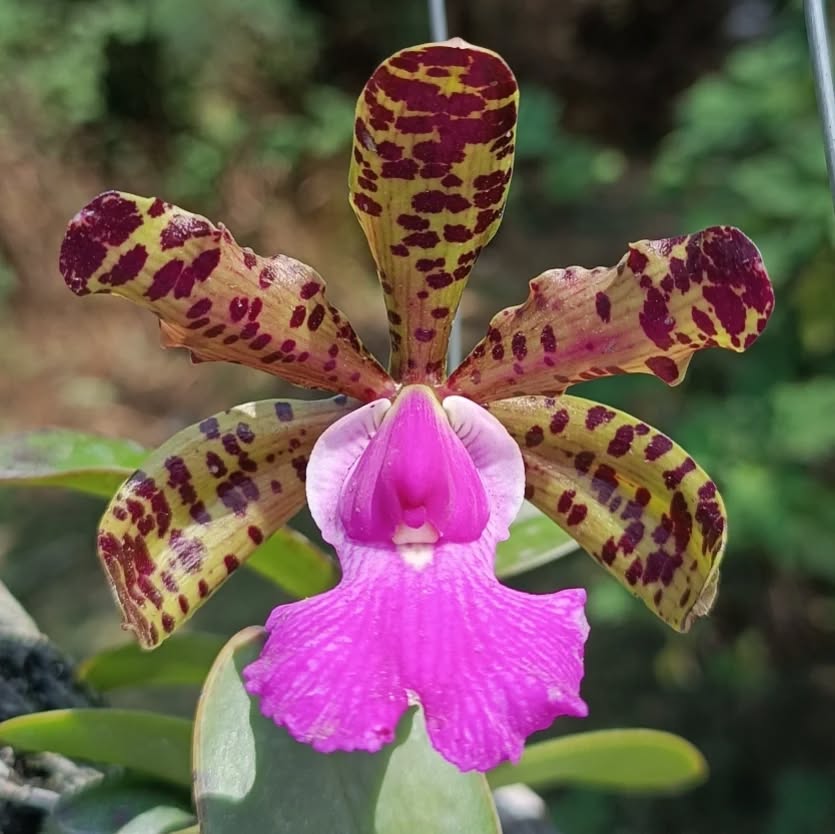
This compact species is a collector’s favorite due to its striking appearance. Its dark, heavily speckled petals contrast beautifully with its bold purple and green hues, creating a vibrant display. It’s an excellent choice for smaller growing spaces.
Cattleya amethystoglossa
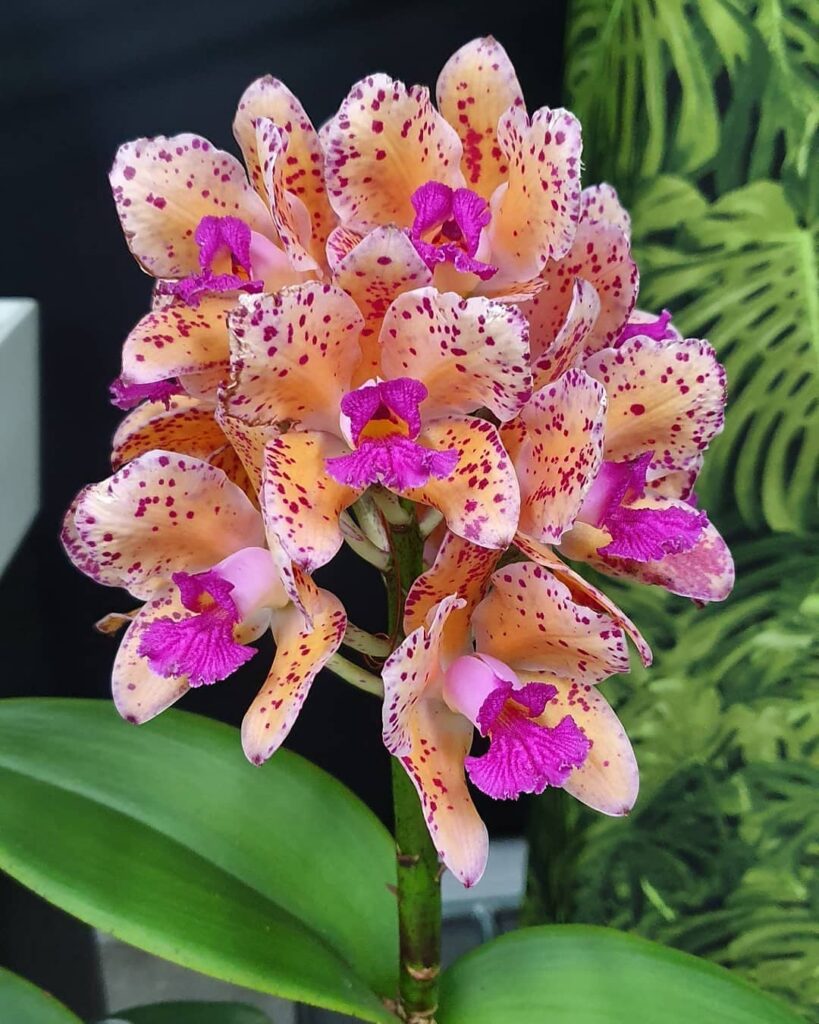
Known for its tall flower spikes, this species produces clusters of blossoms in shades of pink and purple. The flowers are often speckled with dark spots, adding a unique charm to their appearance. Their elegant structure makes them a standout.
Cattleya aurantiaca

A cheerful and lively species, Cattleya aurantiaca produces smaller, densely clustered flowers in brilliant shades of orange. These compact blooms brighten up any orchid collection and are perfect for vibrant displays.
Cattleya dowiana
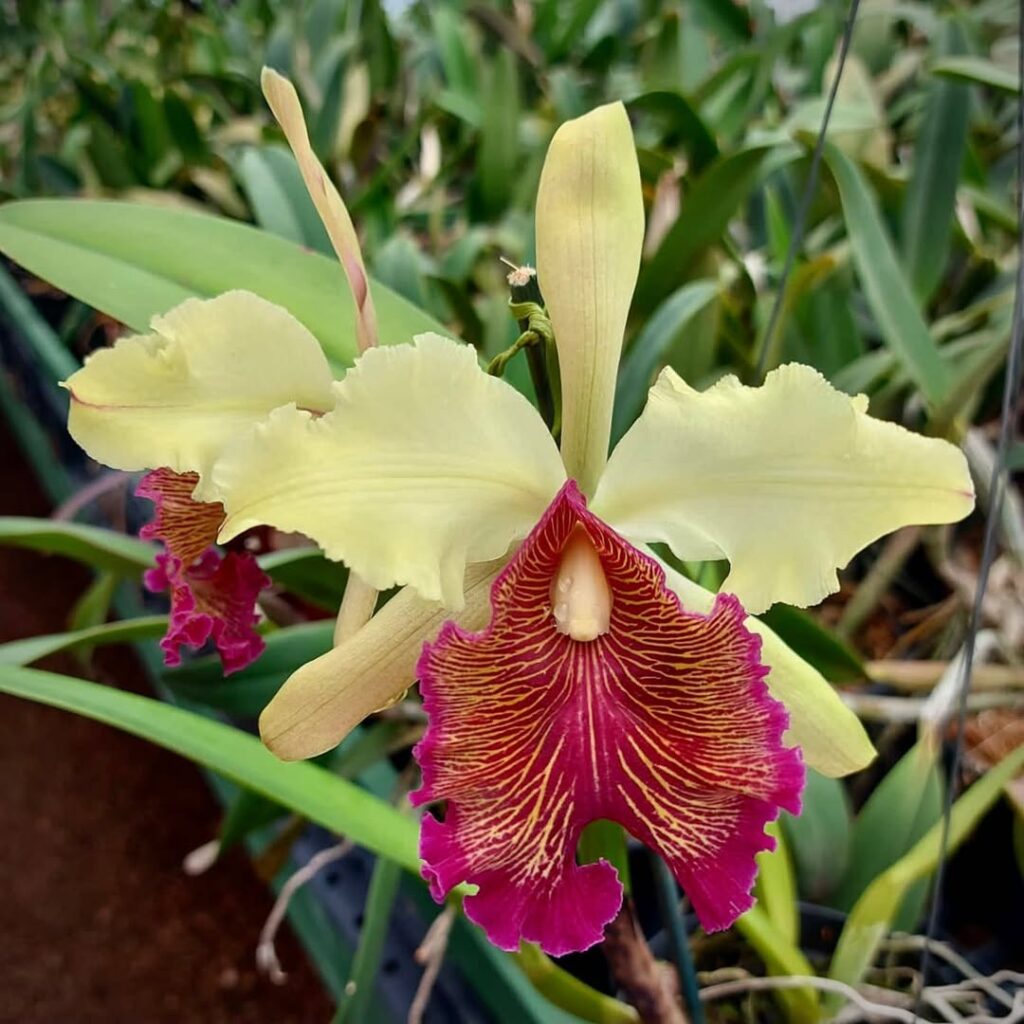
This tropical gem is famous for its showy golden-yellow flowers, accented by a vivid magenta lip. Its blooms are large and striking, making it a must-have for those who appreciate bold, luxurious orchids.
Cattleya dowiana aurea

A subspecies of Cattleya dowiana, the “aurea” variant retains the rich golden-yellow petals and adds an intense magenta hue to the lip, offering even more dramatic contrast. It’s considered a collector’s treasure.
Cattleya eldorado

This species is named after the legendary city of gold for a reason—it produces pastel-toned flowers that exude an air of mystery and elegance. The blooms often have delicate patterns and a graceful form.
Cattleya granulosa

Cattleya granulosa is known for its unusual and exotic color palette. Its greenish petals are adorned with reddish-brown markings, while its lip is often a striking shade of purple. This orchid adds intrigue and texture to collections.
Cattleya harrisoniana
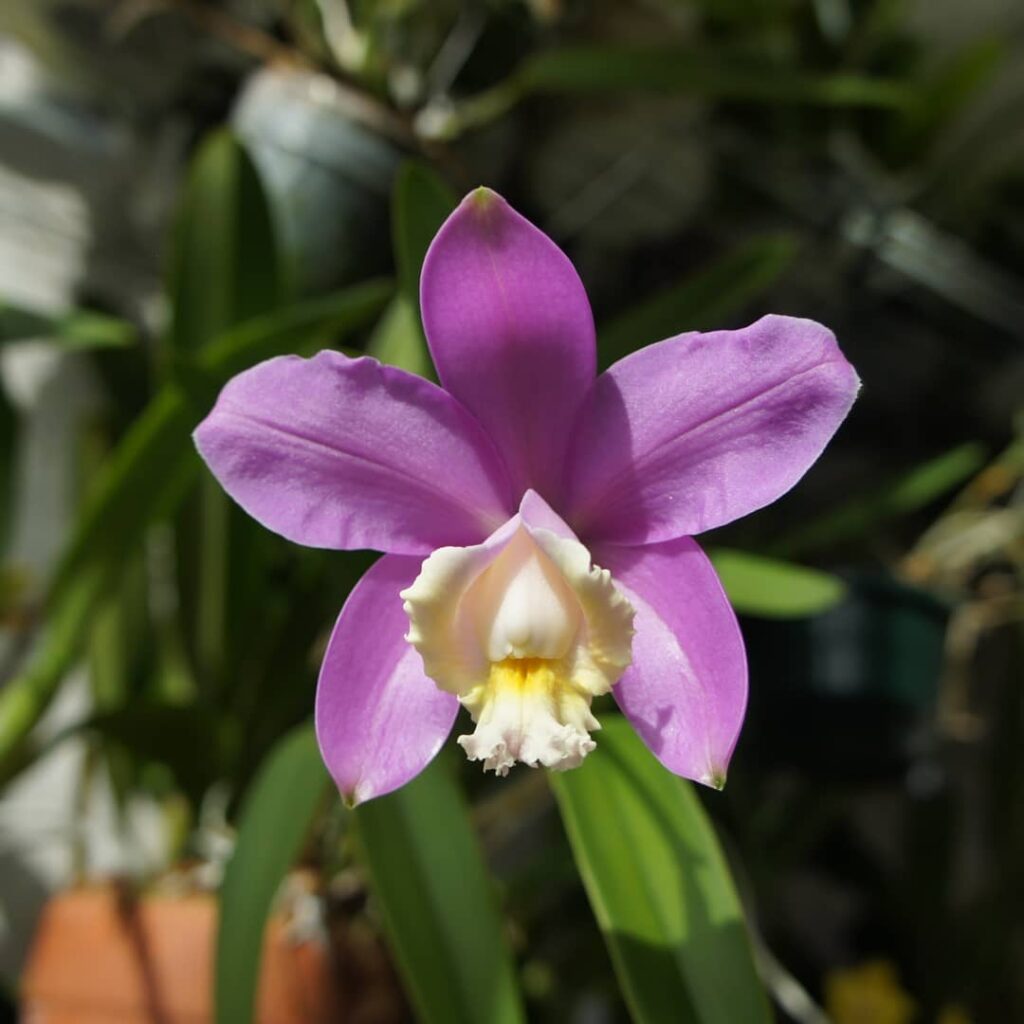
A reliable and charming species, Cattleya harrisoniana produces clusters of pink or lavender flowers. Easy to cultivate, it’s well-loved by growers for its adaptability and consistent blooming.
Cattleya intermedia
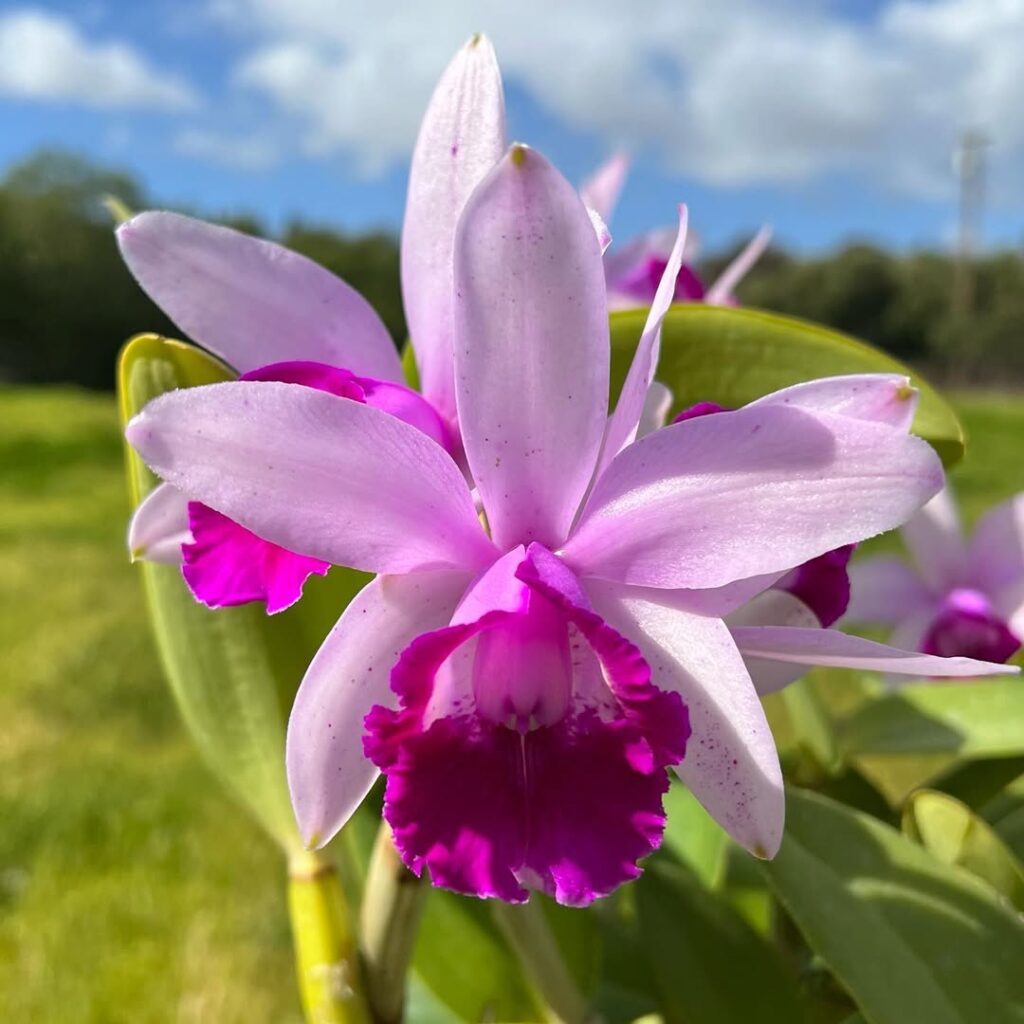
This versatile species is highly variable, with flowers ranging from pristine white to soft pinks and purples. Its tubular-shaped lip adds a unique structural element to its blooms. Its adaptability makes it popular among growers.
Cattleya intermedia var. aquinii
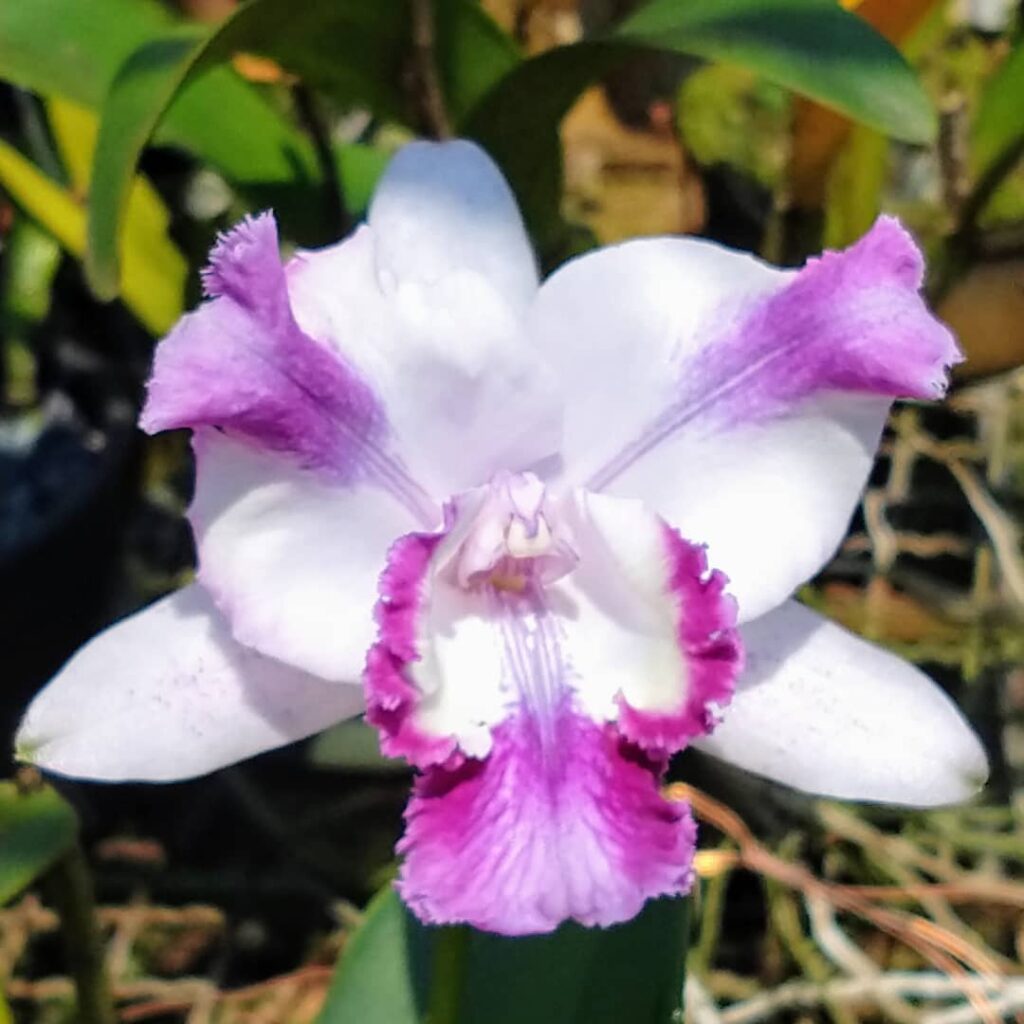
A fascinating variety of Cattleya intermedia, the “aquinii” variant features bicolored blooms that showcase striking contrasts between white and pink-purple tones. Its unusual coloration is highly sought after by orchid enthusiasts.
Cattleya jenmanii
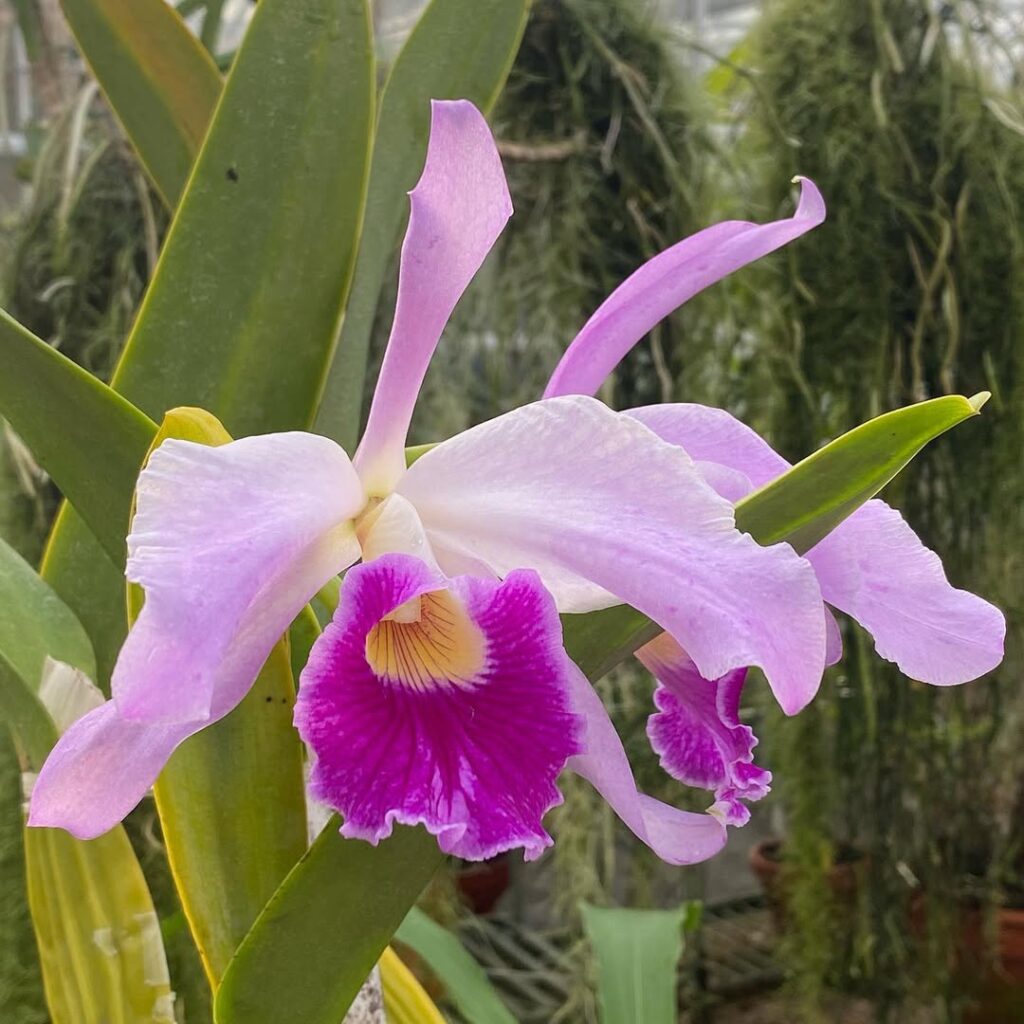
Delicate and refined, Cattleya jenmanii is adored for its lavender-toned flowers with lips that often feature intricate patterns and contrasting hues. Its subtle beauty makes it a sophisticated choice.
Cattleya labiata
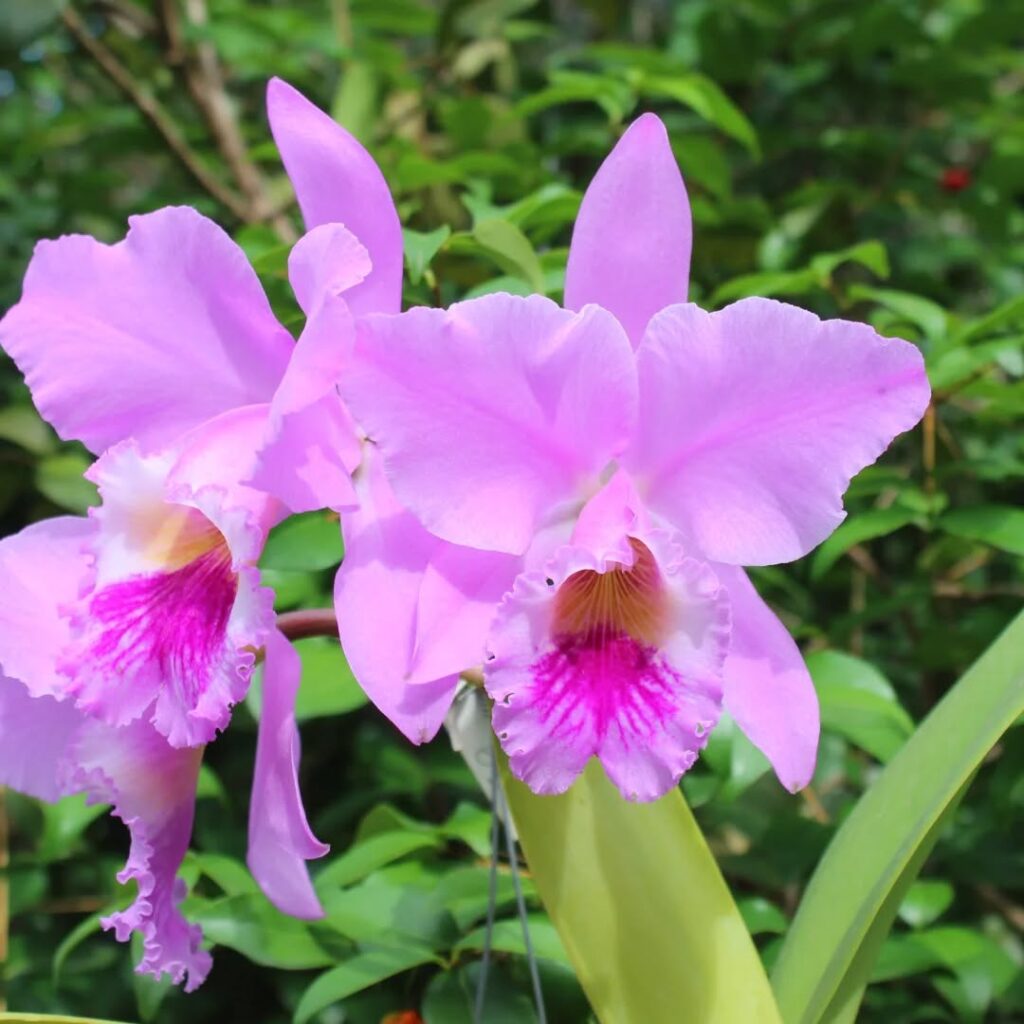
Known as the “Corsage Orchid,” this iconic species features large, fragrant flowers that range from vibrant purple and pink to soft white tones. Its blooms are often used in floral arrangements due to their striking appearance.
Cattleya lueddemanniana
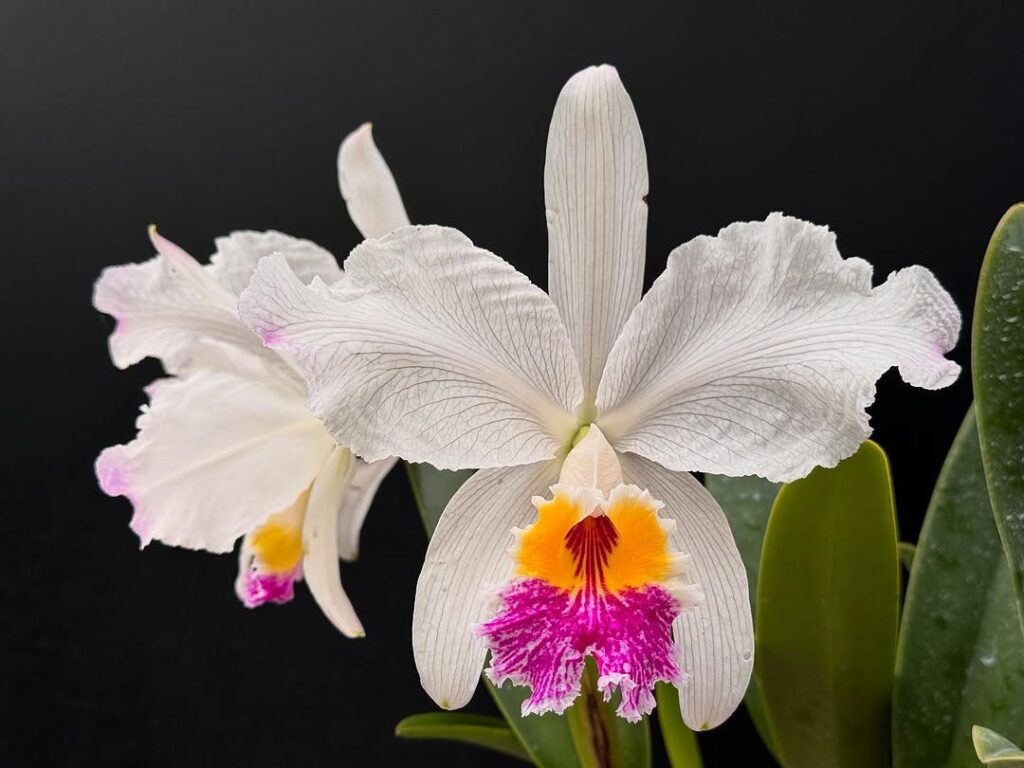
Native to Venezuela, Cattleya lueddemanniana showcases medium-sized blooms in vibrant purple and white shades. Its flowers are long-lasting and often possess a delightful fragrance.
Cattleya maxima

Tall and statuesque, Cattleya maxima is known for its towering pseudobulbs and gorgeous lavender or purple blooms. This species thrives in warm climates and creates an impressive visual impact.
Cattleya mossiae
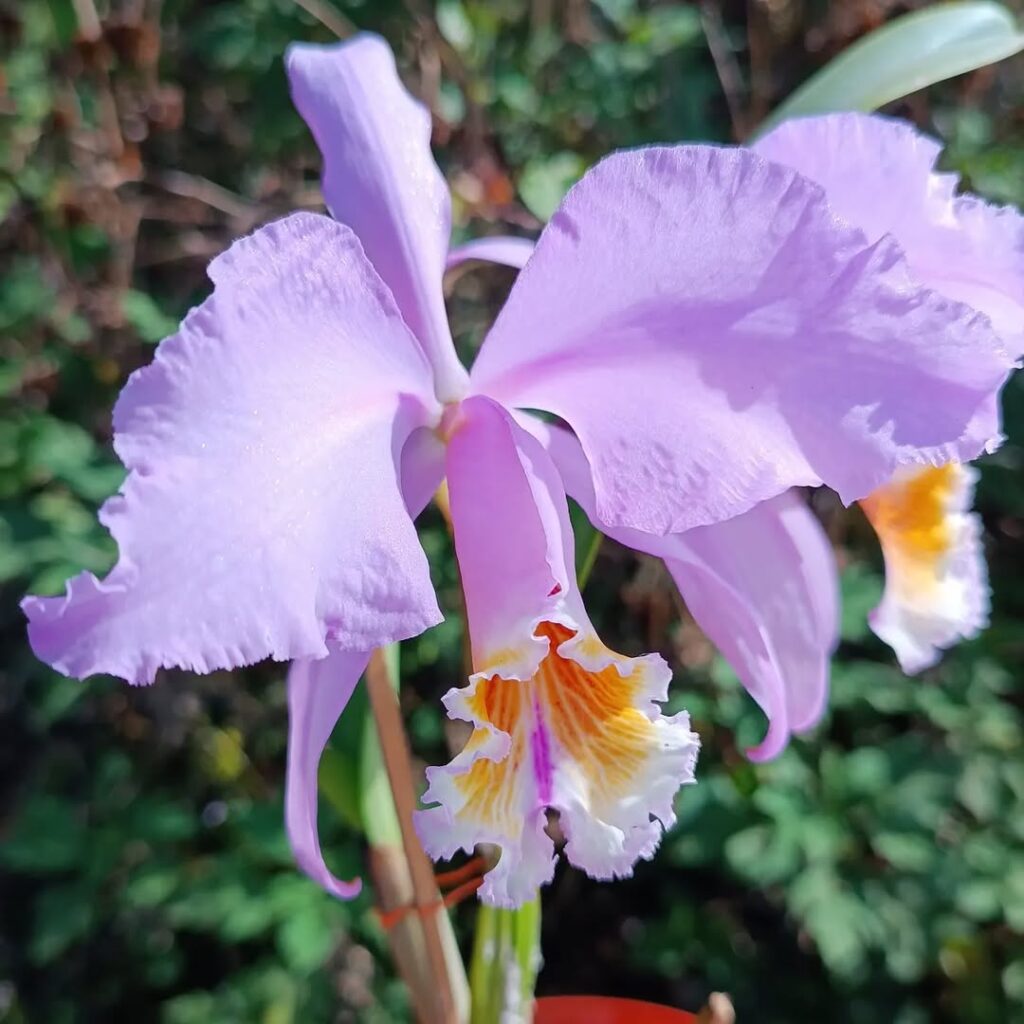
Venezuela’s national flower, Cattleya mossiae features graceful, large blooms with soft lavender and magenta hues. It is celebrated for its cultural significance and breathtaking elegance.
Cattleya percivaliana
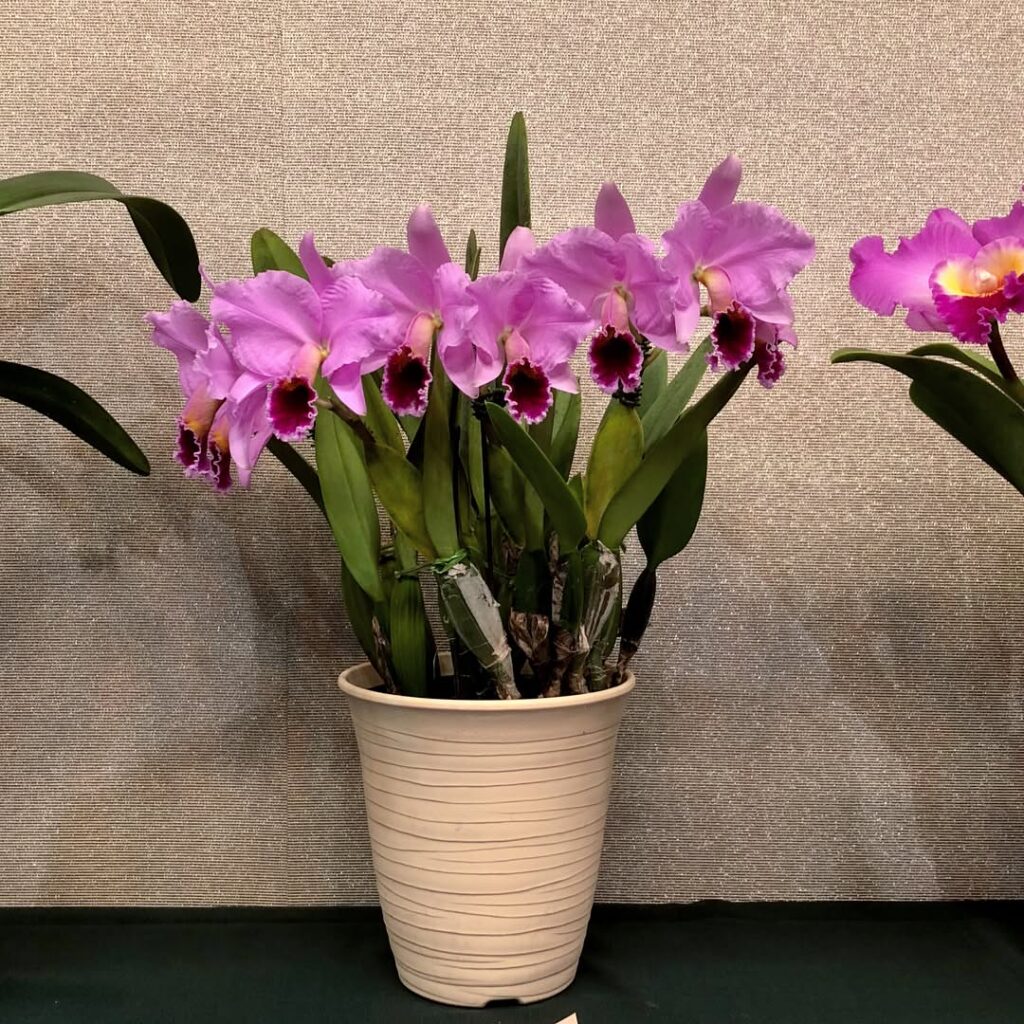
Often called the “Christmas Orchid” because it blooms during the winter holiday season, this species features smaller flowers with a rich, sweet fragrance. Its subdued tones add a touch of warmth during colder months.
Cattleya rex
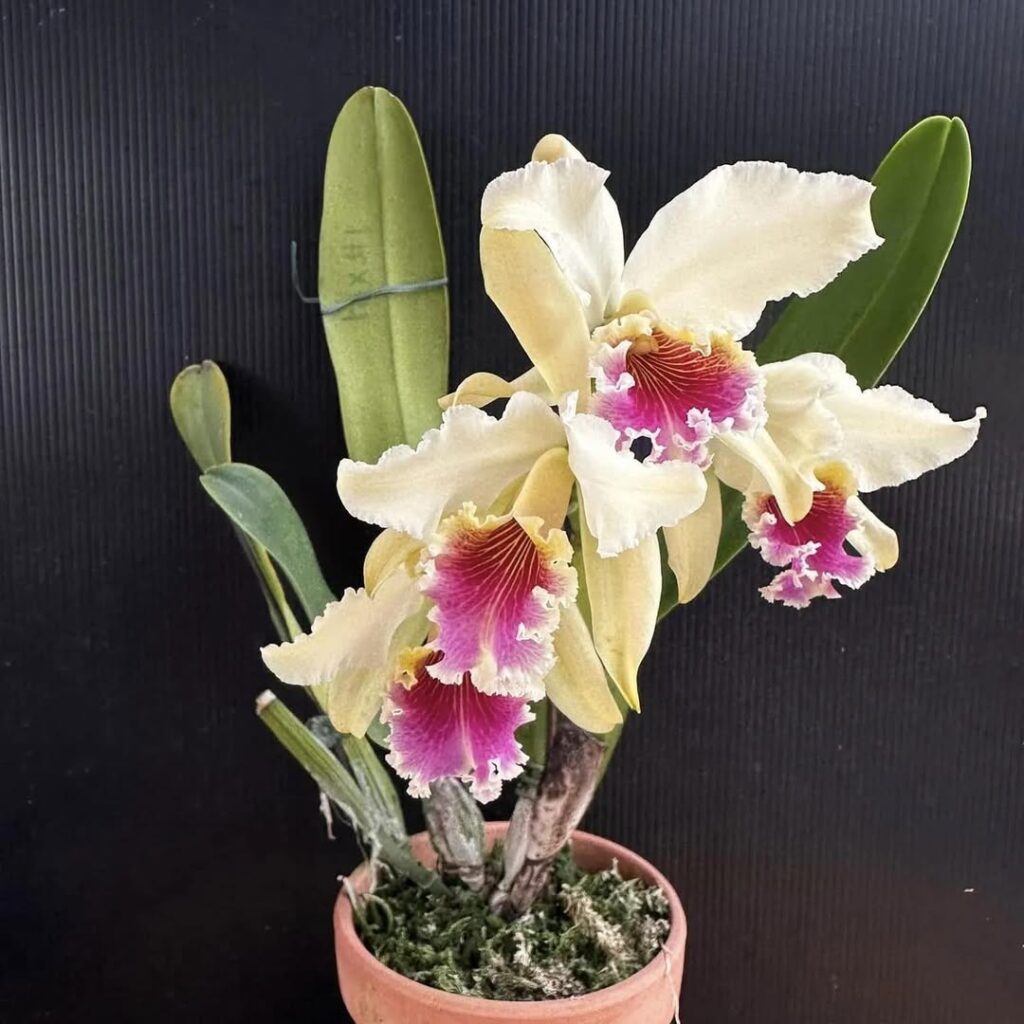
Native to Peru, this species is truly regal in appearance. It produces large, intricately patterned flowers with a sweet fragrance, making it a beloved addition to collections.
Cattleya schilleriana
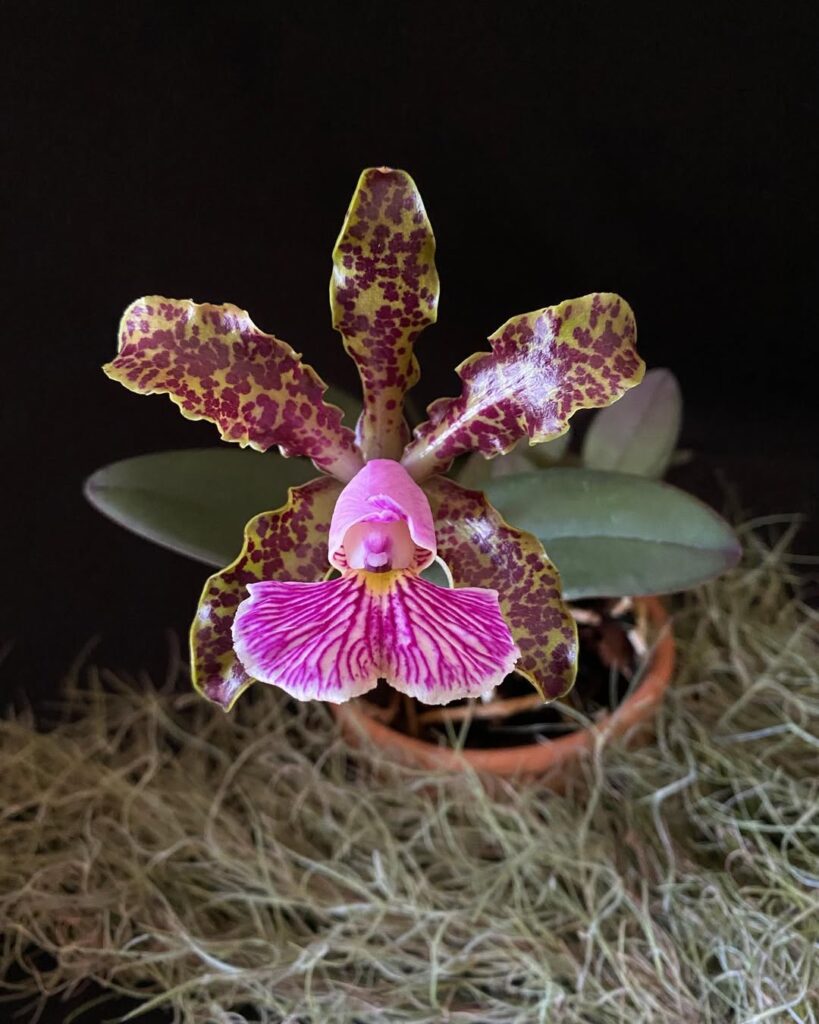
With its smaller yet intricate blooms, Cattleya schilleriana captivates with its unique patterns and blends of pink, white, and yellow hues. It has a delicate, ethereal beauty.
Cattleya skinneri (Guarianthe skinneri)

As Costa Rica’s national flower, Cattleya skinneri is cherished for its vibrant pink blossoms and its cultural importance. It produces a profusion of flowers and thrives in a range of growing conditions.
Cattleya trianaei
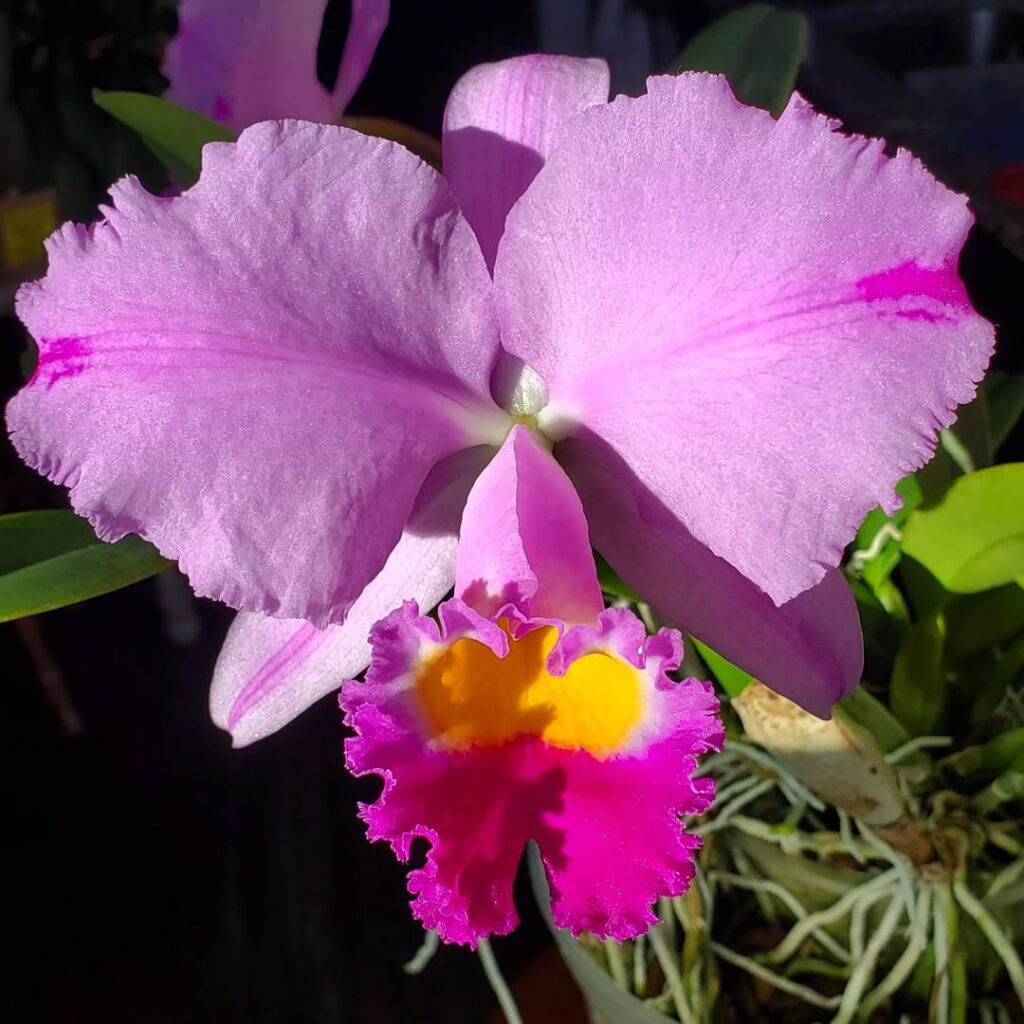
The national flower of Colombia, Cattleya trianaei offers elegant flowers in shades of lavender, pink, or white. This species symbolizes Colombia’s rich biodiversity and natural beauty.
Cattleya velutina

Rare and captivating, Cattleya velutina stands out with its velvety petals in unique green and brown tones. This exotic species is a hidden gem for collectors.
Essential Growing Requirements for Cattleyas
Now that you’re familiar with the different types, mastering the basic growing requirements will help your cattleyas thrive. These orchids need bright, indirect light, preferably from an east-facing window, with temperatures between 65-85°F during the day and 55-65°F at night.
Your cattleyas will flourish in 40-70% humidity and require well-draining epiphytic orchid mix. Water thoroughly when the potting medium feels dry about 1 inch deep, typically every 5-7 days during growing season.
Fertilize weekly with a balanced 20-20-20 orchid fertilizer at quarter strength, and guarantee good air circulation to prevent fungal issues. You’ll also need pots with plenty of drainage holes.
Potting and Repotting Your Cattleya Orchid
You’ll need to repot your Cattleya orchid every 2-3 years, or when you notice the plant outgrowing its container. The best time to tackle this task is right after flowering, when you can spot new root growth emerging from the pseudobulbs. For ideal results, choose a well-draining potting mix that combines medium-grade bark, perlite, and charcoal in a 3:1:1 ratio.
When to Repot Cattleyas
Three key signs indicate it’s time to repot your orchid: overcrowded roots pushing up and out of the pot, deteriorating potting medium that’s turned mushy or breaks apart easily, and pseudobulbs growing over the pot’s edge.
You’ll typically need to repot your Cattleya every 2-3 years, though younger plants may need yearly repotting. Spring is ideal, just as new roots emerge after flowering.
Don’t wait too long – if your orchid’s medium takes more than 5-7 days to dry out between waterings, it’s breaking down and needs replacing. Watch for roots turning brown or black, as they’re telling you it’s repotting time.
Best Potting Media Choices
Since Cattleyas thrive with excellent drainage, choosing the right potting medium is crucial for their success. The most reliable options include medium-grade fir bark, which provides ideal aeration and moisture retention. You’ll also want to mix in additional components like perlite and charcoal at a 4:1:1 ratio.
For mature Cattleyas, coarse bark chunks (1/2 to 3/4 inch) work best, while seedlings need finer grade materials. Don’t use potting soil or peat moss, as they’ll retain too much moisture and suffocate your orchid’s roots.
Mix your chosen media thoroughly before use, and verify it’s pre-moistened. Quality media should last 2-3 years before breaking down.
Watering and Humidity Management
Your Cattleya orchid’s water needs will change throughout the year, with most plants requiring thorough watering every 5-7 days during active growth and less frequently during dormancy. You’ll want to maintain humidity levels between 40-70% through misting or humidity trays, while ensuring proper air circulation to prevent fungal issues. When watering, drench the potting medium completely until water flows from the drainage holes, but don’t water again until the top inch of medium feels dry to the touch.
Optimal Watering Schedule
Although Cattleya orchids are relatively drought-tolerant, they need a consistent watering schedule to thrive. You’ll want to water your Cattleya thoroughly every 5-7 days during the growing season, allowing the top 1-2 inches of potting mix to dry between waterings.
During winter months, reduce watering frequency to every 10-14 days when the plant’s in its resting phase. You can easily test moisture levels by inserting your finger into the potting mix or lifting the pot to check its weight.
Water early in the morning, using room temperature water, and guarantee excess water drains completely to prevent root rot.
Maintaining Proper Humidity
While Cattleya orchids naturally thrive in tropical environments, they’ll need humidity levels between 50-70% in your home to flourish. You can maintain these levels using a humidity tray filled with pebbles and water, placing it beneath your orchid’s pot without letting the bottom touch the water.
For precise control, install a small humidifier nearby and monitor levels with a hygrometer. During winter months, when indoor heating reduces moisture, mist your orchid‘s aerial roots lightly in the morning using filtered water. Just don’t spray the flowers, as water droplets can cause spotting on delicate blooms.
Avoiding Common Moisture Mistakes
Despite their tropical nature, Cattleya orchids can quickly decline from common moisture-related mistakes. You’ll want to avoid overwatering, which leads to root rot and fungal problems within days.
Don’t water on a fixed schedule. Instead, check the potting medium’s moisture by inserting your finger an inch deep – if it’s still damp, wait another day. You’ll also need to watch for water pooling in leaf crowns, which can cause bacterial rot.
Never mist your Cattleya’s flowers directly, as water spots will damage the blooms. When increasing humidity, guarantee proper air circulation to prevent fungal issues that can develop within 24-48 hours.
Light and Temperature Requirements
Since Cattleya orchids originate from tropical regions, they thrive in bright, indirect sunlight and warm temperatures. You’ll want to place them near an east or west-facing window, where they’ll receive 4-6 hours of filtered light daily.
Keep your Cattleya’s daytime temperature between 70-85°F (21-29°C), with a 10-15°F drop at night. They can tolerate brief temperature spikes up to 95°F, but you’ll need to increase humidity and air circulation.
Watch for leaf color as an indicator of proper light levels. Deep green leaves suggest too little light, while yellowish-green with red-tinged edges indicates ideal exposure.
Fertilizing and Nutrient Needs
Proper fertilization keeps your Cattleya orchids healthy and blooming, but you’ll need to understand the basics of nutrient delivery. During the growing season, you’ll want to feed your orchids weekly with a balanced 20-20-20 fertilizer diluted to quarter-strength, while reducing applications to monthly during the winter rest period. Your orchids will signal their nutrient needs through visual cues, such as yellowing leaves indicating nitrogen deficiency or dark green leaves with poor flowering suggesting too much nitrogen.
Balanced Fertilizer Selection Tips
Selecting the right balanced fertilizer for your Cattleya orchids doesn’t need to be complicated. Look for a 20-20-20 NPK ratio during the growing season, and switch to a 10-30-20 blend during blooming periods.
Choose water-soluble fertilizers specifically formulated for orchids, as they’ll contain essential micronutrients like calcium and magnesium. You’ll want to dilute these to quarter-strength, which means using ¼ teaspoon per gallon of water.
During winter months, reduce fertilizing to once monthly. If you’re using rainwater or reverse osmosis water, select a formula that includes trace minerals. When in doubt, remember the old orchid grower’s motto: “weekly, weakly.”
Seasonal Feeding Schedule
While your Cattleya’s nutrient needs fluctuate throughout the year, you’ll need to adjust your feeding schedule to match its natural growth cycles. During active growth in spring and summer, fertilize every two weeks with a balanced 20-20-20 solution at quarter strength.
Cut back to monthly feedings in fall, using a lower nitrogen formula like 10-30-20. Skip fertilizing entirely during winter’s dormancy period, usually December through February, as your orchid needs this rest period to thrive.
Resume feeding in early March when you spot new growth, gradually increasing the frequency until you’re back to the regular two-week schedule.
Signs of Nutrient Deficiency
Three key signs alert you to nutrient deficiencies in your Cattleya orchid before serious damage occurs. First, you’ll notice yellowing leaves with green veins, indicating a lack of iron or magnesium. If the older leaves turn yellow while new growth stays green, your orchid’s likely running low on nitrogen.
The second sign appears in the pseudobulbs, which become wrinkled or shriveled when phosphorus is scarce. Finally, watch for stunted growth and small, pale flowers – a clear signal of potassium deficiency.
Don’t wait until these symptoms become severe. Test your fertilizer’s NPK ratio and adjust your feeding schedule accordingly.
Common Pests and Disease Prevention
Despite their resilient nature, Cattleya orchids can fall prey to several common pests and diseases that’ll wreak havoc on your plants. Watch for spider mites, which leave tiny webbing and yellow spots, and mealybugs that appear as white, cotton-like clusters in leaf joints.
To prevent infestations, inspect your orchids weekly and maintain proper air circulation. If you spot pests, isolate affected plants immediately and treat with neem oil solution (2 tablespoons per gallon of water). For fungal issues like black rot, remove infected areas with sterilized tools and apply a copper-based fungicide.
Keep humidity below 70% and avoid water on leaves overnight to prevent bacterial growth.
Blooming Cycles and Flower Care
Understanding your Cattleya’s blooming cycle is key to enjoying its spectacular flowers throughout the year. Most Cattleyas bloom once or twice annually, with flowers lasting 2-3 weeks. You’ll notice flower sheaths forming 2-3 months before blooming begins.
When your orchid’s in bloom, keep temperatures between 65-80°F and avoid misting the flowers directly. Move the plant away from direct sunlight to extend bloom time. If you’re planning to display your Cattleya, you can carefully stake the flower spike for better presentation.
Once blooming ends, trim spent flowers at the base of the stem, but don’t remove the green flower sheath – it may produce more blooms.
Propagation Methods and Techniques
After mastering your Cattleya’s blooming cycle, you’ll likely want to expand your collection through propagation. You can multiply your orchids through division, back bulb propagation, or seed growing.
Division works best with mature plants that have at least six pseudobulbs. Simply cut the rhizome between bulbs, ensuring each section has 3-4 healthy pseudobulbs and viable roots. For back bulb propagation, carefully remove dormant pseudobulbs and place them in sphagnum moss.
While seed propagation is possible, it’s complex and requires sterile lab conditions. Most home growers should stick to division, which offers a 90% success rate when done during spring growth.
